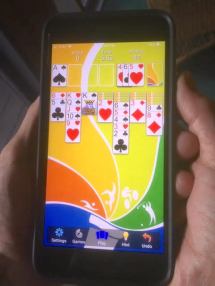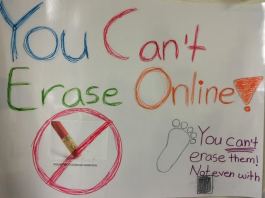 If on occasion, you become concerned about how your child handles stressful learning situations, read this insightful article, Daydreaming is Good for You, and Other Things I Want Kids to Know About their Brains. The writer describes a range of brain capabilities, explaining how they can support young learners. Growing children need to understand how these basic neurological brain features can help them become stronger, confident, and more effective learners. Continue reading “What We Want Kids to Know About How the Brain Learns”
If on occasion, you become concerned about how your child handles stressful learning situations, read this insightful article, Daydreaming is Good for You, and Other Things I Want Kids to Know About their Brains. The writer describes a range of brain capabilities, explaining how they can support young learners. Growing children need to understand how these basic neurological brain features can help them become stronger, confident, and more effective learners. Continue reading “What We Want Kids to Know About How the Brain Learns”
Category: 21st Century teaching
A California School’s Smartphone Solution
 Distraction in 21st Century schools is a huge issue. Read this descriptive article about students, digital devices, and paying attention in the classroom, published in the Chronicle of Higher Education.
Distraction in 21st Century schools is a huge issue. Read this descriptive article about students, digital devices, and paying attention in the classroom, published in the Chronicle of Higher Education.
Probably no device has become as frustrating for teachers as the smartphone. Many educators, whether they teach in middle school, high school, or college express a sense of frustration about the amount of time their students spend glancing down at their mobile phones when they are supposed to be paying attention to what is going on in the classroom
Administrators at San Mateo High School, about 20 miles away from San Francisco, have decided that student phones will be locked up during school hours. At the start of the day students insert their devices into a pouch that closes with a school lock. The kids keep the bags with them, and at the end of the academic day, the administrators unlock them.
The goal of this school’s policy is to decrease the student distraction and to stop students’ habit of looking down at their phones every few minutes. The above link includes an interesting NBC news story.
It will be interesting to see if other schools develop similar policies.
Those Digital Footprints Keep Multiplying

For years, when I taught seminars in digital citizenship to third, fourth, and fifth graders, the primary topic was always digital footprints. Oh, we discussed and worked on lots of other 21st Century connected-world issues, civility, for instance, but everything seemed to wend its way back to those always-proliferating digital footprints.
We watched and rewatched my favorite digital dossier video from the Berkman Klein Center at Harvard. The students kept diaries and also asked their parents to do so. They found an online calculator to explore and considered how their permanent digital footprints might look a few years down the road. We made a list of all the potential places that might collect digital footprints, one year creating a list that started at the ceiling, went all the way to the floor and then back up to the ceiling again.
My students were always amazed at the size of their digital dossiers which included, in addition to email, apps, social media, and websites, a range of digital markings that they never considered such as credit cards, license plates, grocery store purchases, EZ pass travel, Amazon purchases, app downloads, and so much more. So when the time came for a final project — more than half or each fifth-grade class chose to concentrate on a digital footprint topic. Two of their posters are shared here. Continue reading “Those Digital Footprints Keep Multiplying”
Oh No! It’s MOMO! … Psssst — It’s a Hoax
Well my title says it all. I read, quite by accident, a crazy MoMo post by someone named Wanda —a scary, urgent, bang-on-the-drum essay. Then there was the video… I am pleased to say that my hoax antenna is pretty well-tuned, and my reaction was, “Here we go again.” In truth I also realized that something similar had been around the digital world a few times before. But since then I’ve watched it travel, once again all over the world.

Both the New York Times and the Atlantic have published articles about the MoMo hoax. They are worth reading and sharing, so check them out.
I am stunned that guidance counselors, police departments, sheriffs, and all sorts of other community leaders, even a few national leaders (ummm, not to mention parents) did not do their media literacy evaluation homework before they responded, no freaked out. Continue reading “Oh No! It’s MOMO! … Psssst — It’s a Hoax”
Video Tour of the Newseum’s News History Gallery
 Watch this inside video tour (below) of the Newseum’s updated News History Gallery. The exhibit features 400-plus historical newspapers, newsbooks, and magazines — documents that reported some of the greatest and most amazing news stories. You can visit the Newseum’s web site to explore some of the other exhibits without leaving your home or school.
Watch this inside video tour (below) of the Newseum’s updated News History Gallery. The exhibit features 400-plus historical newspapers, newsbooks, and magazines — documents that reported some of the greatest and most amazing news stories. You can visit the Newseum’s web site to explore some of the other exhibits without leaving your home or school.
After you watch the video, check out and sign up for NewseumEd, a site that is filled with ideas for teaching First Amendment and media literacy and with resources that can be easily downloaded. These are terrific connected world teaching tools that can be used in 21st Century classrooms. Continue reading “Video Tour of the Newseum’s News History Gallery”
Two Pithy Quotes on Social Media & Democracy

Social media and the digital tools that we use every day have transported us into a strange new era. As we use these tools to work and play we tacitly allow them to collect incredible amounts of our personal information — content that documents our lives, likes, loves, and dislikes — and we become sitting ducks for sham news and fraudulent information. Those who possess our information, good guys or bad, can use impersonal algorithms to assess and use our data. Read my post about using Duck, Duck Go.
Fast Company’ article, Alphabet’s Eric Schmidt On Fake News, Russia, And Information Warfare describes how Google and social media companies were caught off guard by the manipulation of their systems and the prevalence of divisive news. The October 29, 2017, article by Austin Carr contains two interesting comments by titans of digital industry, though neither of them testified at the Capitol Hill hearings. Continue reading “Two Pithy Quotes on Social Media & Democracy”
The Newseum’s Front Pages — A Rich Media Literacy Resource

If you are seeking a new and creative medialit resource — for home or school learning — take some time to discover and explore the Today’s Front Pages exhibit on display at the Newseum in Washington, DC. Visitors to the city can set aside a block of time to visit the Newseum itself, but those who don’t have time for a longer visit can still check out the front pages on the sidewalk in front of the Newseum (for free).
Not traveling to the Nation’s Capital? No problem. The Newseum makes it easy to visit Today’s Front Pages online — each day all 800 Front Pages are posted on the website. And there’s even a Today’s Front Pages app.
No matter where you see them, the Front Page exhibits are rich with learning possibilities.
Continue reading “The Newseum’s Front Pages — A Rich Media Literacy Resource”


You must be logged in to post a comment.